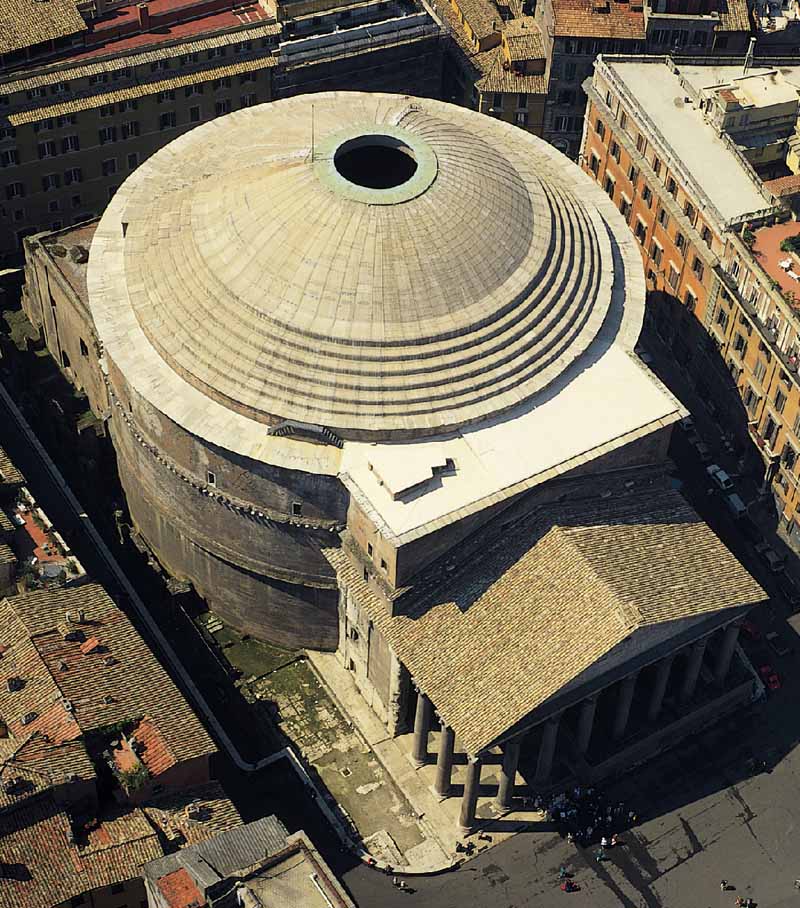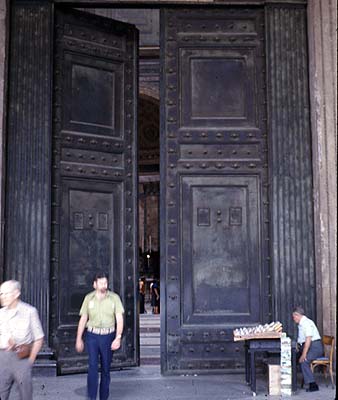Ghamidi on Ghamidi
In Pakistan everybody who watches TV knows Ghamidi. Outside
of Pakistan he is perhaps not as well-known as he should be. Like any one who becomes popular enough, he has become controversial enough.
I have not heard or read him enough to make a well informed
opinion about him. Whatever I have heard, I can say that he speaks very well,
lays out argument in a scholarly way and compels viewers and listeners to keep
the dial where it is. Opinion about him
has ranged from a modern scholar, a reformer, a liberal, clever tele
evangelist, to outright innovator of religion.
He had to leave Pakistan and now lives in Malaysia, in order to
safeguard his ministry and people around him.
Hearing him piecemeal, one gets very bold and provocative
statements like sporting a beard is a part of culture, not Islam.
He limits the role of offensive war to the time of Prophet. War cannot be waged now unless it is in defense or waged by the oppressed. Muslims do not have a duty to form an Islamic state etc.
He limits the role of offensive war to the time of Prophet. War cannot be waged now unless it is in defense or waged by the oppressed. Muslims do not have a duty to form an Islamic state etc.
He has to his credit the first (if not the only) scholar to openly oppose Taliban government in Afghanistan.
He resigned from the Council of Islamic Ideology basically against the issue of women’s right.
Once talking about nuclear weapons, a source of pride for
most Pakistanis, he said that weapons of mass destruction are not compatible
with the spirit of Islam and it was our misfortune that we have made those
people heroes who have worked on that.
Contemplating on whether to read more by him or not, I was
given a suggestion. It was by a dear class fellow of mine, an ardent
supporter of his. He suggested Ghamidi’s video message on the home page of new website.
I am thankful to him as it was immensely helpful in forming an initial opinion
about him and his work.
What follows here is my summary of his video lecture,
presented as objectively and as honestly as possible by me. It is followed by my own comments, which are obviously biased.
I give credit to Ghamidi to lay it out in open. He
does not let the viewer speculate where he is coming from. Not everyone in this field may do that.
People are here mostly to win as much readership and supporters and may bent
the words here and there. I do not see that here in Ghamidi.
It also helped me know that he is not the person I thought he was.
For a summary of his views presented by a friendly supporter, visit Wikipedia at https://en.wikipedia.org/wiki/Javed_Ahmad_Ghamidi
It also helped me know that he is not the person I thought he was.
For a summary of his views presented by a friendly supporter, visit Wikipedia at https://en.wikipedia.org/wiki/Javed_Ahmad_Ghamidi
Summary of the video:
http://www.al-mawrid.org/
The human time is divided into two: The times of the Prophets and the time after
that. The time of the prophets ended with the Prophet Muhammad. Now there is no direct contact with the
creator.
So there has to be a party of Muslims to spread the good
word, (9:122). That gave rise to the institution of religious scholarship.
We see these scholars in Companions, the Successors and the Successors of the Successors.
Here the prime source was Quran.
With time things deteriorated. Ghamidi describes them as a tale of two tragedies.
The first tragedy was that the Quran stopped being the prime source. Four things led to that:
The first tragedy was that the Quran stopped being the prime source. Four things led to that:
- Different Qirats (recitations). Some say from 30 to 10 to 7. People started to say that Quran can be (and has been) recited in a different way than the one being used commonly.
- The concept of argumentative logic. If we reach some decision based on our own intelligence, it should take precedence over the perceived interpretation of the words of Quran, meaning that meanings may be hidden and different than what one thinks they are
- As it is mentioned in Quran that some verses are clear and others are ambiguous. As it is not clear which is which, one can call any verse as ambiguous.
- Hadith became the final word. If a hadith is different from Quran, the verses of Quran have to be interpreted in the light of the Hadith
It all lead to the secondary role of Quran to the above
various issues.
Second tragedy: Infiltration of human thoughts in the core of the religion. After
the establishment of Muslim Empire beyond the Arabian Peninsula many
non-Arabs were brought in its folds.
- It created the need of Ijtihad. It was not a bad thing but these human effort to explain Quran became a part of the religious creed.
- The infiltration of Greek, Persian, Indian and Egyptian philosophies in the philosophy of Islam.
- Need to use logic to defend Islam ie Ilm Kilam (Muslim scholasticism).
- Infiltration of mysticism. Sufism ie the philosophical minded people tried to reach God directly. Buddhism and Hinduism are examples of that. It was added to Islam. It was very attractive as there is a concept of kashf.
Ghamidi quotes Ghazali and his seminal work, "Ahya alum" which dominated Islamic thought for almost a thousand years as a carrier of all these influences, including Asharia’s influence, philosophy and the final
impact of mysticism. He acknowledges in
his autobiography 'Muntiqul minal dilal' (deliverance from the error) and in his book of summary kemia e saadat (
alchemy of success) that he found the final light in tasawwaf.
Ghazali has influenced Muslims for centuries. Shah Wali
Ullah subscribed to the same thought process in his 'Huggatul Baligha' and "Tafhimatul ilahiya". Iqbal's "Reconstruction of Religious Thoughts in Islam" carries the same concept. It takes you through three steps iman, fikr and Irfan.
Ghamidi deplores all these influences.
Ghamidi deplores all these influences.
There were others who tried to stay the course and
presented Islam without any additions. Reference to the famous Hadith recited in every Friday Khutba, "Inna khairul amure awazimuha, wa sharul amure mudisatuha, was kullo bidatun dalalatun wa kullo dalalatin fil naar"
Here Ghamidi praises the example of Ibe Tayemah who said that Ghazali entered the
belly of philosophy and never came out of it. Tayemah's student Ibn Qayyum has a
great stature in this regard also
Big names from both sides have been in the last two
centuries also
Then Ghamidi takes us through his personal journey. When he started to learn his first inclination was with the first school of thought i.e., philosophy, history, Sufism, fikr and Irfan. At some point he realized something was wrong. If he wanted to make a statement personally he could have done that through ilm and irfan, but if he wanted to say anything related to God, it could only come from God as what He has relayed through his prophets
That is when he met his teacher Amin Ahsan Islahi (himself
influenced by Imam Hamidduin Farahi). Ghamidi commits himself to be a part of this educational and reformist tradition.
He is in the process of fulfilling his duty by setting three priorities.
He is in the process of fulfilling his duty by setting three priorities.
First priority :
To have a tafseer of Quran based on the prominence
of Quran on everything including philosophy, hadith and mysticism.
Tadabarul Quran of Amin Islahi is one such book. He thought that the translation was not good
enough and the personal views of the writer were interfering. So he wrote Al Bayan, with a new translation and new
notes. It is almost finished
Second Priority:
To explain what is Deen. That is reflected in the book which took 17 years to write : Meezan
To explain what is Deen. That is reflected in the book which took 17 years to write : Meezan
According to Ghamidi, it is comparable to Ghazali's Ahyae alum, Shah Waliullah's huggatul baliga and Moududi's Islami nizam e zindagi, He claims he has presented a correct explanation of religion but admits it is a human effort and he could be wrong.
Third priority:
Now Ghamidi wants to do work on Hadith. While acknowledging the great Hadith tradition, he wants to sift the true representative words of the Prophet from the impurities. Dirayat (critical analysis of text) is needed.
Now Ghamidi wants to do work on Hadith. While acknowledging the great Hadith tradition, he wants to sift the true representative words of the Prophet from the impurities. Dirayat (critical analysis of text) is needed.
My Comments:
According to Ghamidi Quran has to be interpreted as it is. Role of any explanation of Quran including the words of the Prophet, knowledge
about history and philosophy, and human argument, should be secondary. If
anything seems to be a contradiction, one has to let all other sources of
knowledge take a back seat.
For me what is hard to accept is the relegation of human intelligence and power of argument to the bottom. Basically he is agreeing with the traditional stand that if you have trouble being at ease with someone in the Book, it is your problem.
For me what is hard to accept is the relegation of human intelligence and power of argument to the bottom. Basically he is agreeing with the traditional stand that if you have trouble being at ease with someone in the Book, it is your problem.
He speaks against Ghazali and that may sound exciting. He puts
Shah Wali Ullah and Iqbal in the same category.
They all incorporate knowledge, philosophy, ilm and Irfan as the ways to
reach God.
The person who stands out for praise in Ghamidi’s eye is Ibn
Tayemma, and his student. Ghamidi’s own
influence is Hamiduddin Farahi and his student Amin Islahi, both eminent ghair muqalid
scholars.
In essence, he may come across as a modernizer, who wants
clean the religion, as it is today, from the effects of human contamination over a thousand and a half years. In doing so, he looks like a reformer who speaks
against many innovations in the religion and wants to take it back to its
pristine source.
But in doing so he brushes aside any role of human
intelligence and logic. If something bothers you and you have difficulty understanding or believing in it, Ghamidi is not there to help.
In effect, if we live long enough to see a world free of all
the militant fundamentalists and there is all peace, it will be Ghamidi and his
followers who be the flag carriers of conservatism.
So, in closing, here are my conclusions. I may be totally wrong.
If you are someone who wants a peaceful and tolerant Islam, and want to get rid of many ills it carries as it is practiced today, Ghamidi is one you should listen to.
If you are someone who wants a peaceful and tolerant Islam, and want to get rid of many ills it carries as it is practiced today, Ghamidi is one you should listen to.
But if you believe in the supremacy of human
intellect and accept or reject ideas and creeds based on reason and logic, you may find one day Ghamidi standing in your way.

















































